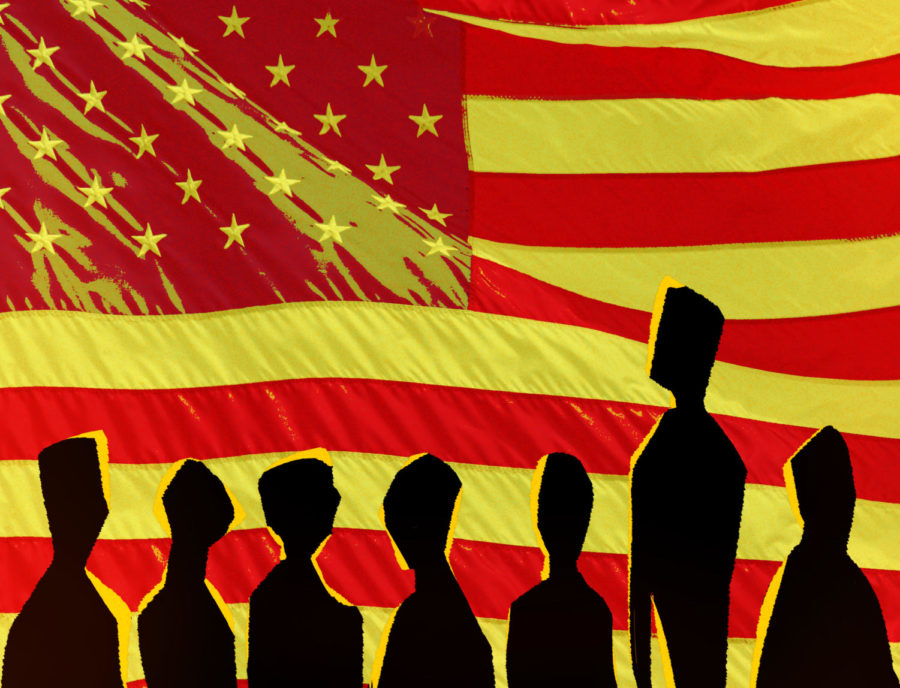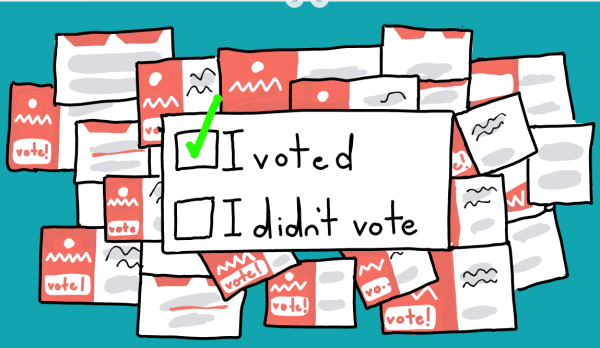Taking a stand by sitting down
Do you sit or stand for the pledge?
by Minseo Kim
November 17, 2022
“I pledge allegiance to the flag of the United States of America. And to the Republic, for which it stands, one Nation, under God, indivisible, with liberty and justice for all.”
Many of us grew up citing this pledge every morning in school. Whether it was mandatory or not, many schools enforced this in classrooms to young age groups. Now, in high school, many students make the choice to stay seated during the pledge every day. But why is this the case? Why are some students deciding to sit down while others stand?
The original version of the pledge, “I pledge allegiance to my Flag and the Republic for which it stands, one nation, indivisible, with liberty and justice for all,” was written in 1892 by Francis Bellamy to celebrate the 400th anniversary of Columbus’ first voyage to the Americas. For any of us who paid attention in US history, the voyage of Columbus to the Americas isn’t the proudest memory to acknowledge as it ended in the large-scale destruction of Native American populations.
According to an article by the NYT, in 1923, the phrase “United States of America ” was added due to people from other countries commemorating their own flag instead of America’s. By 1942, students in schools around the United States were expected not only to stand for the pledge but salute it every day during announcements. Many schools in the late 90s and early 2000s even went the lengths of singing “God bless America” after requiring students recite the pledge every morning.
Although we no longer salute the flag in this manner, you could say that students in America still “sing” our patriotic anthem every day. So why, after years of showing our daily allegiance, have students decided to “take a stand” against the pledge, and stay seated? Have students formed individual opinions around the patriotic slogan of America, or is it due to the persuasion that comes from the common choice of peers?
To test this, 20 classrooms, at random were given a tally, performed blind on students. This was to keep the test anonymous to others so that no judgment was passed. Out of the data gathered, 97 percent of students raised their hands when asked if they stayed sitting for the pledge. Only one or two people out of the majority of classes raised their hand when asked if they stood every day.
Along with gathering research, a student, who would like to remain anonymous, agreed to an interview about the subject. “I think it is cultish, and spreads the wrong idea of patriotism to young people,” they said. “The words ‘under God’ and ‘liberty and justice for all’ have a weird ring to them now, due to the proceedings of the Supreme Court and actions that have been taken recently,” they stated.
As visible in the data gathered, many students don’t stand. However, it is still unclear why the majority decides to respond to the pledge this way. Are students following the actions of other students, and don’t want to be the odd one out, or do they hold the same opinion about the subject matter?
Although the majority of students decide to remain seated, many teachers still stand every day for the patriotic ritual. Math teacher Jill Owens expressed why she stands for the pledge of allegiance. “If I’m in the classroom, I almost always stand,” she said. “It is a reminder to me of our freedoms in the United States. They were paid for by many people before us.”
Outside of the high school setting and throughout our country, many have taken larger steps in opposition to the patriotic message of our nation than simply staying silent in a chair.
Fans of the NFL have most likely heard of the football player Colin Kaepernick, who was the first to take a knee during the National Anthem for his views on black social justice. This caused an uproar of controversy, and eventually got him released from the team at the end of the season. He later sued the NFL for being “blackballed” from the league and won the case. Today, many NFL players still take the knee during the Anthem, to show support of their views.
According to an article by Educational Law, within school throughout the United States, students have the right to express their personal and religious beliefs during the pledge of allegiance, even if that means staying seated.
Although many schools throughout the US abide by this, some schools have implemented a system of asking parents before allowing students to take a seat, discarding age.












